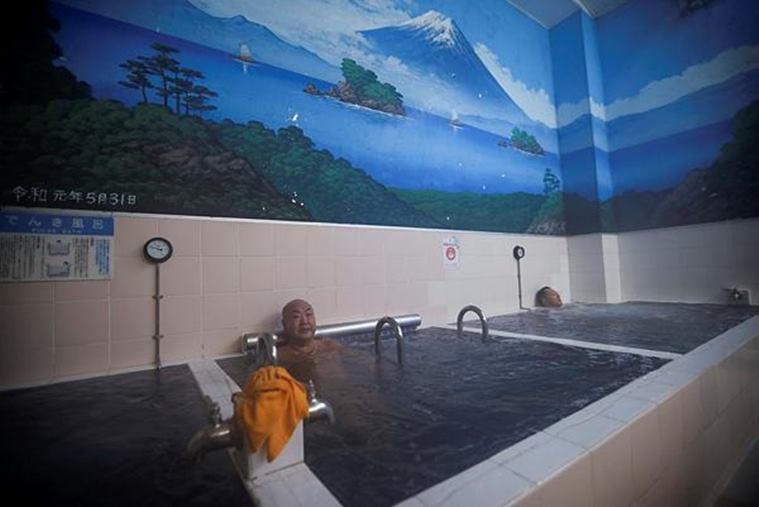High oil prices could chill Japan’s traditional public baths
Japan's public baths don't need any more problems. Their number peaked at 18,000 nationwide in 1968, but now there are only 1,964 after decades of social changes, including more baths at home
 A plastic sheet and advisory to prevent the spread of coronavirus disease (COVID-19) are pictured at the reception counter of Japanese public bathhouse, or sento, 'Dai-ni Takara-yu' in Tokyo, Japan. (REUTERS/Issei Kato)
A plastic sheet and advisory to prevent the spread of coronavirus disease (COVID-19) are pictured at the reception counter of Japanese public bathhouse, or sento, 'Dai-ni Takara-yu' in Tokyo, Japan. (REUTERS/Issei Kato)The COVID-19 pandemic didn’t manage to kill off Dai-ni Takara-yu, a traditional Japanese public bath on a Tokyo back street where neighbours have soaked their cares away since 1949.
But for third-generation owner Tokuji Ito, high oil prices are the next test.
With the coldest months of the year upon him, he must pay 50% more than last year to heat the water for the tubs that are a cherished part of life in his neighbourhood on the western side of the Japanese capital.
“It’s really hard,” said Ito, 53. “For a large company, it might not be that big a deal, but for a small, family-run place like us, it’s really tough.
“Public baths, or sento, traditionally served people who did not have a bath at home, with bathers scrubbing down in separate men’s and women’s sections before soaking in hot tubs. They have also been places to socialise.
 People soak in bathtubs with Mount Fuji painted on the walls at Japanese public bathhouse, or sento, ‘Dai-ni Takara-yu’ in Tokyo, Japan. (REUTERS/Issei Kato)
People soak in bathtubs with Mount Fuji painted on the walls at Japanese public bathhouse, or sento, ‘Dai-ni Takara-yu’ in Tokyo, Japan. (REUTERS/Issei Kato)
Ito eked his way through Tokyo’s repeated waves of coronavirus states of emergency: sento were required to stay open, though the number of older customers at his fell by about one-third.
But he now faces bills of 450,000 yen a month ($4,000) in January and December for fuel oil to heat the boiler that feeds hot water into the tubs, up from 300,000 yen last winter.
The price for the bath is fixed by the Tokyo government, so he can’t charge more, though he says he wouldn’t raise prices anyway.
“Just after the pandemic, we were hoping to get people back. So these high prices are difficult,” he said.
Japan’s public baths don’t need any more problems. Their number peaked at 18,000 nationwide in 1968, but now there are only 1,964 after decades of social changes, including more baths at home. Many sento serve beer or have saunas to attract customers.
Ito hopes to tough it out until the warmer months, when less fuel will be needed. A former oil trader who returned to the family business five years ago, he thinks prices won’t hit previous record highs.
For now, customers still line up before the baths open at 3:30 p.m. “I don’t mind even if he has to raise prices,” said Shuji Yamazaki, 70, who comes three to four times a week. “Without these baths, I’d be in real trouble.”
📣 For more lifestyle news, follow us on Instagram | Twitter | Facebook and don’t miss out on the latest updates!



- 01
- 02
- 03
- 04
- 05
























